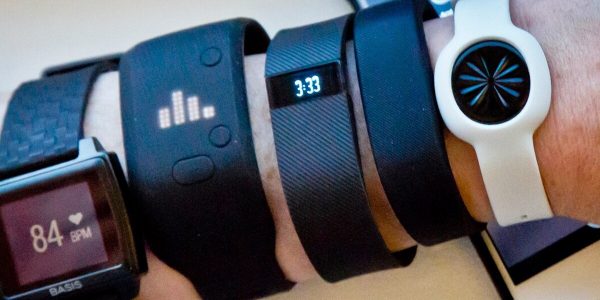A former Navy top official is proposing the service scrap the semi-annual physical fitness test and instead monitor sailors’ health through wearable tracking devices.
For the six years between 2009 and 2015, Juan M. Garcia III was the assistant secretary of the Navy for manpower and reserve affairs— as well as a retired Navy Reserve captain.
Working with several Navy chiefs of personnel trying to create fitness policy, he saw a sea service wrestling with ways to build a true “culture of fitness” and thinks technology might offer some solutions.
“The idea would be a shift from this twice-a -year crucible, with all the attendant dangers that go with that,” Garcia told Navy Times. “We shift to a year-round culture of fitness using analytics to determine a sailor’s fitness level.”
Garcia’s concerned that today’s fitness tests have created their own culture by prodding sailors to take drastic measures such as “ binge dieting, and folks getting into wraps and even surgeries to try to get through” the Navy’s body composition assessment.
He fears too many sailors tough out their tests despite little or no preparation, what’s often termed in the fleet the “three-mile-a-year program.”
Wearable technology changes that because the Navy can track almost any fitness activity by measuring resting heart beats. Sailors can choose how they exercise and if the analytics match the standards set by the sea service, they’re good to go.
“Pick whatever works for you, whatever motivates them the most,” Garcia said. “Are you a weightlifter, a swimmer, a hiker, or is your thing yoga?”
“At the end of the day the device spits out what the docs call ‘VO2 max lung capacity,’” he continued. “It’s considered the gold standard in determining cardio-vascular strength and endurance.”
That was the Air Force’s primary fitness measurement in the 1990s, he said. Airmen would mount a stationary bike, strap on an oxygen mask and a doctor would monitor the tests that measured their lung capacity.
“They loved it,” Garcia said. “They felt like it was the ground truth about the fitness level of their folks.”
But after the tempo of operations skyrocketed in the aftermath of the Sept. 11, 2001, terrorist bombings, the Air Force found it increasingly difficult to administer a cumbersome test that required extra manpower and hardware, so Garcia said “they turned it off” and returned to traditional fitness exams.
To Garcia, today’s wearable devices can do the same jobs that “a bike, a hose and a doc” did for the Air Force.
Sailors can download their data to their command fitness leaders at regular intervals and the service can determine if they’re in good shape or need some help.
“You’d constantly know right where you stand with your fitness,” Garcia said.
Wearable devices got a rocky start in the military as the fitness fad took off nationwide — not because they didn’t work, but because many of the gadgets tracked the location of those wearing them, sometimes outing clandestine sites on the globe.
Garcia said those functions can be turned off before anyone unwittingly violates OPSEC. He wants the Navy to consider a wearable tech test run for young men and women in the delayed entry program, before they ship to Recruit Training Command.
“Once they raise their hand, why not have the first piece of Navy gear they’re issued be wearable fitness technology? The recruiters can track their fitness and determine if they are, in fact, ready and in shape enough to head off to boot camp,” he said.
The Navy conducted a tiny test of wearable fitness technology in 2015. That was an effort to encourage “year-round fitness awareness” among sailors by measuring their physical activity and allowing them to set goals.
But that project was limited. As with a similar Army initiative, officials didn’t download the data to a central location, something a new effort targeting future recruits could change, Garcia said.
Garcia believes that many of today’s recruits aren’t as fit as those from previous generations, but he admires their determination to serve.
“We’ve got to give them the tools and help them build their fitness while they’re waiting to ship,” he said. “What I love about the analytics is it now allows the recruiter to definitively and objectively say, ‘Hey, you’re ready to ship to Great Lakes.’”










